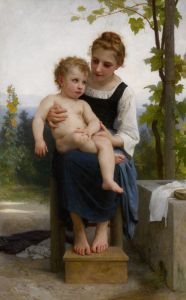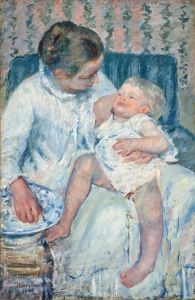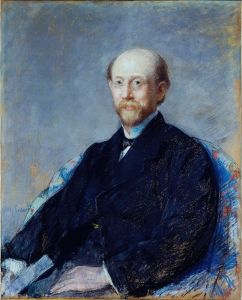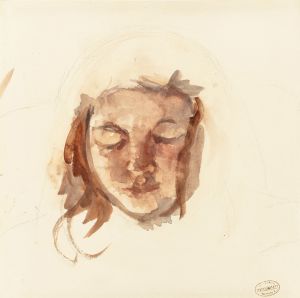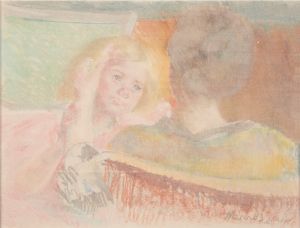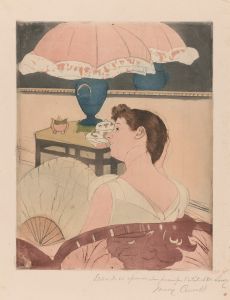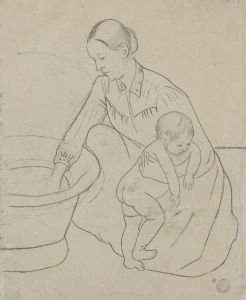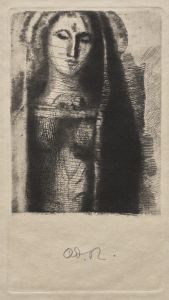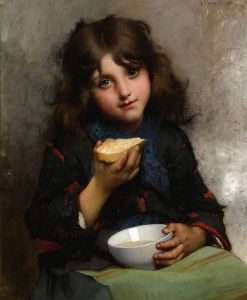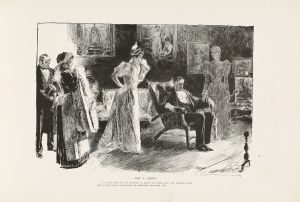
Afternoon Tea Party
A hand-painted replica of Mary Cassatt’s masterpiece Afternoon Tea Party, meticulously crafted by professional artists to capture the true essence of the original. Each piece is created with museum-quality canvas and rare mineral pigments, carefully painted by experienced artists with delicate brushstrokes and rich, layered colors to perfectly recreate the texture of the original artwork. Unlike machine-printed reproductions, this hand-painted version brings the painting to life, infused with the artist’s emotions and skill in every stroke. Whether for personal collection or home decoration, it instantly elevates the artistic atmosphere of any space.
Mary Cassatt's "Afternoon Tea Party" is a notable work by the American painter, who is renowned for her contributions to the Impressionist movement. Cassatt, born in 1844 in Allegheny City, Pennsylvania, was one of the few American artists to be closely associated with the French Impressionists, a group she joined in the late 19th century. Her work often focused on the private and social lives of women, capturing intimate moments with a keen eye for detail and emotion.
"Afternoon Tea Party" exemplifies Cassatt's interest in domestic scenes and her ability to portray the subtleties of social interaction. The painting depicts a serene and refined moment of social gathering, a theme that was prevalent in her work. Cassatt's focus on women in domestic settings was both a reflection of her personal experiences and a commentary on the roles of women in society during her time.
The painting showcases Cassatt's mastery of color and light, hallmarks of the Impressionist style. She often employed a soft palette and loose brushwork to convey the warmth and intimacy of her subjects. In "Afternoon Tea Party," these techniques are evident in the delicate rendering of fabrics and the gentle play of light across the figures, creating a sense of immediacy and presence.
Cassatt's work was heavily influenced by her time in France, where she moved in 1866 to study art. She was deeply inspired by the works of the Old Masters, as well as her contemporaries, including Edgar Degas, with whom she developed a close friendship. Degas introduced her to the Impressionist circle, and she participated in several of their exhibitions, gaining recognition for her unique perspective and technical skill.
"Afternoon Tea Party" is a testament to Cassatt's ability to capture the nuances of human interaction and the quiet dignity of her subjects. Her paintings often depicted women engaged in everyday activities, such as reading, caring for children, or, as in this case, enjoying a social gathering. Through these depictions, Cassatt offered a glimpse into the private lives of women, challenging the traditional boundaries of art and society.
Cassatt's work has been celebrated for its contribution to the Impressionist movement and its exploration of themes related to femininity and domesticity. Her paintings are housed in major museums around the world, and she is regarded as a pioneering figure in the art world, particularly for women artists. "Afternoon Tea Party" remains an important piece in understanding Cassatt's oeuvre and the broader context of Impressionist art.
In summary, "Afternoon Tea Party" by Mary Cassatt is a quintessential example of her work, highlighting her focus on the lives of women and her skillful use of Impressionist techniques. Through her art, Cassatt provided a window into the social customs of her time, while also pushing the boundaries of what was considered acceptable subject matter for fine art. Her legacy continues to influence artists and captivate audiences today.





